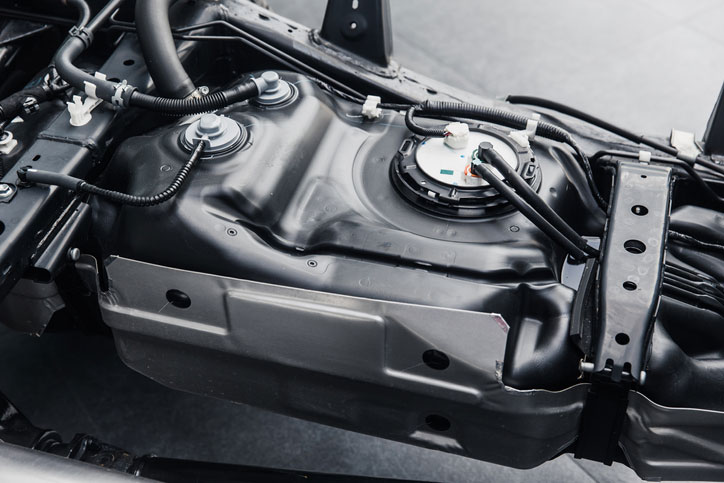Overview
Electric fuel pumps used with fuel injected engines are positioned inside the fuel tank. This position not only keeps them quiet but allows the fuel to cool them as well. It is also a safer location for the pump because it precludes the possibility of leaks and contains a one-way or rollover valve that prevents fuel from escaping in the event of an accident.
In-tank pumps are either in a framework or contained in a module along with the fuel-sending unit. The modules are replaced as a unit while the frame-type pump can be replaced independently of the fuel-sending unit.
Tips for Replacing the Fuel Pump
The first and foremost thing to keep in mind is that this is a very hazardous job, and every precaution must be taken to prevent accidental ignition of the fuel vapors.
The vapors from an open tank will float above the ground, and the wind can carry them quite a distance before they disperse enough to prevent ignition.
- Drain all but two or three gallons of fuel from the tank to prevent spillage when the tank tilts for removal. This can be done on most vehicles, with the exception of German-manufactured vehicles, by removing the Schrader valve from the fuel rail test port, placing a hose from the port to a gas can, and jumping the fuel pump relay.
- Relieve the fuel pressure in the fuel line before disconnecting it.
- Remove the filler and vent hose at the top under the fuel cap.
- Disconnect the fuel pump and fuel sending unit electrical connector.
- Make sure the hoses on the vapor canister are disconnected.
- Examine the location of the fuel tank under the vehicle in relation to the rear passenger seat. Many vehicles have an access panel under the rear seat designed for easy fuel pump replacement.
- Use a helper to assist in balancing the fuel tank on the floor jack if it needs to be removed.
- Have the helper steady the fuel tank on the floor jack while you are removing the retaining straps.
- Slowly lower the fuel tank just enough to access the fuel line connections on the top of the tank.
- Survey the area prior to removing the fuel pump from the tank. Make sure there is no ignition hazard.
- Do not use a metal hammer or screwdriver to remove the lock ring. Use a rubber mallet and a block of wood.
- When you are finished with the installation, cycle the ignition key several times to pressurize the fuel lines and check for leaks.

